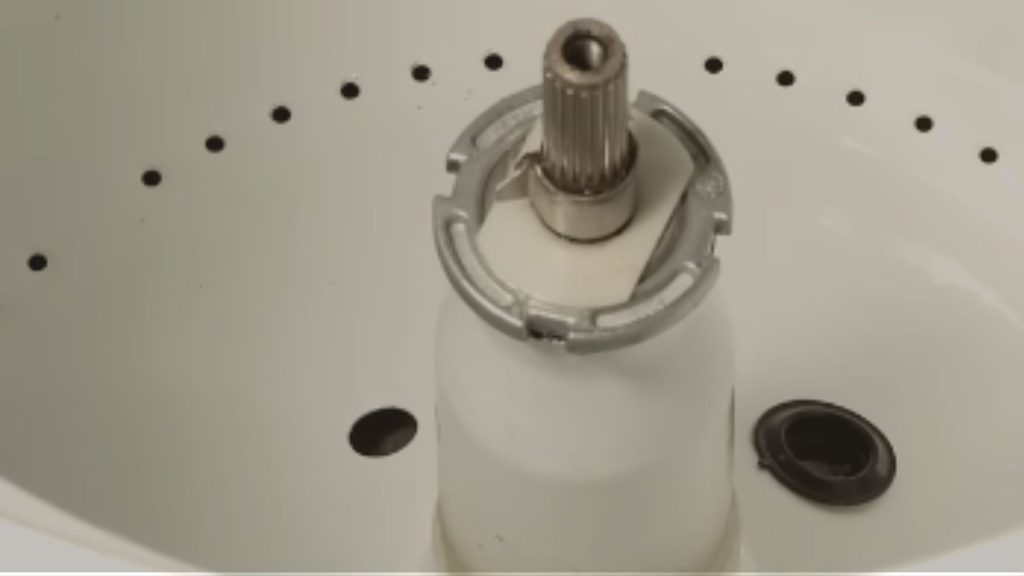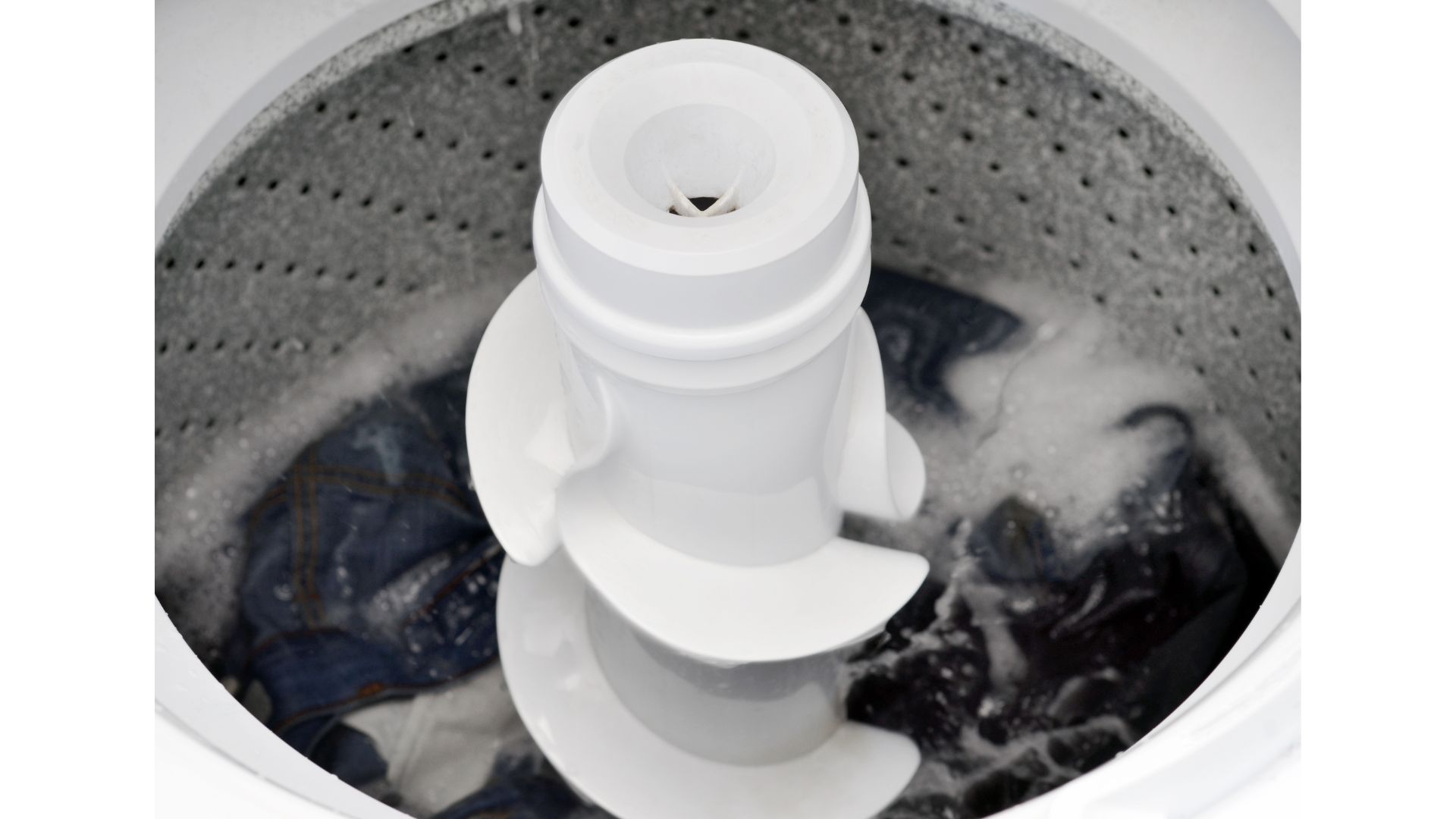Most experts will encourage you to keep your filter clean. But you can’t clean the filter if you can’t find it. The guide below will show you where to find the filter and how to clean it.
Does My Whirlpool Top Load Washing Machine Have A Filter?
Yes, the whirlpool top-load washing machine has a filter. The appliance cannot survive without one. Keep the following in mind:
1). What Is A Filter?
The filter is exactly what it sounds like. The term refers to a device that prevents lint and debris from invading the washing machine’s sensitive components. Some washers have multiple filters situated in different locations.
2). What Does The Filter Do?
The filter protects the Whirlpool washing machine. This confuses people because the water in a washing machine goes down a drain hose. Eventually, it leaves the appliance altogether. But if that is true, why do you need a filter?
If you left several coins and buttons in your pocket, what difference does it make if those buttons and coins flow into the drain with the rest of the water? Whether the filter captures them or you remove them, they will leave your machine all the same, won’t they?
Not necessarily. First of all, those objects can harm the hose. Like every other component, hoses wear out over time. However, you can accelerate that wear and tear if you allow hard objects to pass through the drain.
Naturally, you can’t run a machine with a damaged drain. You must repair or replace it. But what if the objects in question are too soft to harm the drain? One example is lint.
Clothes produce a lot of lint, and Whirlpool washers have filters specifically designed to catch the lint.
But why do you care about catching the lint when it can’t even harm the washer? The lint is dangerous because it can accumulate in the drain, essentially blocking the exit and preventing the dirty water from escaping. A blocked drain will prevent the washer from working.
Additionally, lint is flammable. It can start a fire if it accumulates in the wrong place. Filters will prevent all these outcomes and more.
3). Can The Machine Run Without A Filter?
Technically speaking, the machine will work. Some Whirlpool models will alert you with error codes and beeps. However, most washers are not sophisticated enough to notice the filter’s absence.
But even if the washer notices the filter’s absence, it will continue to run. This leaves you vulnerable to fires, clogging, and malfunctions.
4). Do All Whirpool Machines Use Filters?
All washers have filters of one sort or another. The LXR7144EQO doesn’t have a filter. It uses a plastic self-cleaning screen that acts as a strainer. This isn’t a filter in the traditional sense, but it still performs a filtration function.
Where Is The Filter Located On A Whirlpool Top Load Washer?

| Washer Type | Filter Location |
| Agitator | Inside The Center Agitator |
| Impeller | Bottom Front Or Back Of The Washer |
The manual has all the answers you need here. Washers tend to vary in design depending on the model. As such, the location of the filter may vary. Some washing machines don’t offer lint filters. They use self-cleaning pump filters.
Others have traditional lint filters. This is why the manufacturer includes documentation with diagrams showing you the location of the filters. If you don’t have a manual, focus your search on the following areas:
- Pull out the drawer on the lower right-hand side.
- Check inside the center agitator if you have an agitator-type appliance. This one is a lint trap.
- Check the end of the drainage hose. This one is a mesh screen that traps debris from the water draining out of the washer.
- Check the back of the unit if you have the impeller type.
- Look behind the small hatch in the front section of the washer.
- Inspect the top rim of the drum.
How Do You Clean The Filter On A Whirlpool Top Load Washer?
You don’t want to tamper with a defective Whirlpool washer. You should leave this work to an expert. But if you blame the defects on a dirty filter, you can clean the filter without help, depending on its location:
1). Speaking of location, find the filter. The manual will guide you. These devices are not that difficult to locate. If you reach out to Whirlpool’s customer support and submit your serial number, they will show you the location of the filter.
2). Don’t forget to wear gloves. Washers have sharp components and edges. You don’t want to cut your hand while retrieving the filter.
3). Make sure you have a basin on hand. Water may pour out once you remove the filter. Place some towels on the floor to minimize the mess. The severity of the mess depends on the location of the filter.
4). Once you retrieve the filter, you can wipe it with a clean cloth. This minimizes the mess even further by removing some of the layers of lint and debris.
5). For some people, wiping with a cloth is enough, especially if you clean the filter routinely. Routine maintenance prevents the debris from accumulating. But if the component is caked in dirt and grime, you must take additional measures.
Get a basin of hot water and laundry detergent, and soak the filter. Ten minutes is enough to soften the gunk. Use a brush with soft bristles to brush the filter. If some areas have stubborn collections of lint, use a damp cloth to remove them.
6). If you’re satisfied with the state of the filter, pat it until it is dry and slot it back into place in the washer. The filter gets wet whenever you use the washer. Therefore, you don’t have to dry it thoroughly before reinserting it. The moisture is not a threat. The most important thing is to secure it. You don’t want to run the washer when the filter is loose.
A loose filter allows the water to leak.
What about the filter in the pump? Just because you have a self-cleaning machine doesn’t mean you can neglect the pump’s filter:
1). Use the Whirlpool manual to find the pump. If you locate the pump, you will find the filter.
2). Once again, you should keep a basin and towels on hand to minimize the mess once you remove the filter. You need the towels because some of the water will miss the basin.
3). Soak the filter in a basin of hot water and liquid detergent. Use a brush with soft bristles to scrub the filter until it is clean.
4). Install the filter. Make sure it is secure to prevent leaks.
Don’t ignore the septic system. Pull out the washer’s rubber hose and allow the water to exit into a basin. Use a flashlight to inspect the drain pump for clogging. Remove any obstructions you see before re-installing the filter.
If the machine is still showing signs of clogging, check the vent that carries the waste out of the device to the septic system. Follow the hose to your home’s drainage system. Lint can block this area. Inspect it and remove obstructions. The septic system only clogs when you fail to perform routine maintenance.
Why Do You Need To Clean The Filter?
The filter exists to trap debris such as lint and hair. If you don’t clean the filter, that debris will accumulate over time, creating a blockage. If the clogging persists, the washer may stop working altogether. Don’t be surprised if a fire starts because lint accumulated in the vents, and a spark ignited the flammable substance. You can also expect dirty filters to harm components such as the drain pump.
Clean the filters every three to six months. You should also inspect them once a month to identify and eliminate malfunctions before they spiral into a bigger problem.
Related Post:

